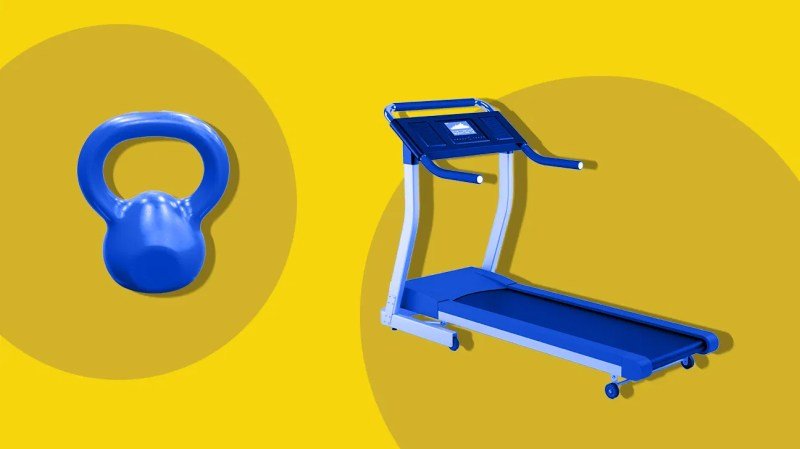Which Burns More Calories Running Or Lifting Weights – Energy balance is essential for weight loss. It is impossible to lose weight without creating a calorie deficit, and while some attention will be placed on the “energy in” side of the equation, the “energy out” side provides an opportunity to It makes the food a little easier.
The amount of daily energy expenditure includes several factors: basal metabolic rate (the minimum amount of energy needed to survive), the energy needed to digest and digest food, and physical activity.
Which Burns More Calories Running Or Lifting Weights

Exercise energy expenditure is further divided into planned exercise and energy expenditure associated with sitting, walking, and activities of daily living. The latter is the most common among people, but it also varies according to external factors, such as work. You can read more about it here.
How To Balance Running And Weightlifting — Runstreet
Exercise programs are the easiest to stick to and usually fall into the broad categories of cardio or weight lifting.
Both can be difficult, but it’s a common misconception that lifting weights burns more calories. This may be because the complex setup is not long, but it can feel overwhelming. Many people have mentioned the energy cost of recovery and it is fair to assume that the energy cost of repairing damage and building new muscle is very high.
Unfortunately, these assumptions are not correct. Effort level and fatigue are not the same as calories burned, and it is often forgotten that most of the time spent during weight training is not actively working the muscles and resting.
You may be skeptical, but there is research to back this up. Lytle et al (2019) measured energy expenditure in men and women during weight training. They also did high intensity exercises: 7 different exercises, 2-3 sets for 8-12 reps at 70% of the max. It was a difficult arrangement that brought them close to failure.
Weight Training: Benefits, Exercises, Safety, And More
The researchers found that the activity level is the main factor that determines the amount of energy burned, but the experimental training protocol did not affect the amount of calories: no subject burned more than 200 calories.
Men burn about twice as many calories as women due to greater lean mass. This means that people with a lot of muscle will benefit from burning more calories from training, but not only from weight training. This should be done with any type of exercise.
After lifting 10 exercises for 3 sets of 10, women burn an average of 155 calories. 70% higher.

Eight 1X15RM exercises resulted in an average caloric expenditure of 135 calories in men and 82 calories in women.
How Much Does Strength Training Really Increase Metabolism?
The first study mentioned derived a pattern from its data. Depending on the person, lifting weights burns 1.7 to 3.1 calories per minute.
Lifting weights for 45 minutes burns an average of 108 calories, and lifting weights for an hour burns an average of 144 calories. At most, the average person can expect to burn about 186 calories per hour of weight training.
To put that into context, a slow jog is pumping 3 to 4 times per minute. Keeping it fast can burn 5 to 8 times more calories than lifting weights.
Is cardio better for weight loss? If your main goal with exercise is to burn as many calories as possible, then steady-state aerobic exercise is your best option. Cardio and heavy lifting are strenuous and mean you need to rest between sets, which is great for burning calories. Running means expending energy without resting.
Why Weight Training Helps You Shape Up & Burn Fat
I should note that you can schedule a weight training session to do the same as traditional aerobic exercise. Most people don’t do this in training, and usually, weight training is more intense and no different from normal weight training.
Some people “gocha!” return the spent energy after a session. That’s right. This is called EPOC (Excess Post-Oxygen Consumption) and is the energy expended to bring your system back to homeostasis after any type of training.
This systematic review of EPOC after training showed that energy expenditure after training ranged from 4 calories to 114 calories.

The study cited by Lytle et al measured EPOC expenditure of only 7 calories. This value is not important and can be consumed by the amount of energy of an aerobic session of the same duration.
Is Cardio Or Lifting Weights Better For Losing Weight? — Digital Barbell
But exercise isn’t just about burning calories. It is a stimulant that provides health benefits that vary by type. Cardio produces specific changes that are different from weight lifting, but both bring health and longevity benefits.
It is better to focus on learning to achieve these benefits than spending energy. While burning calories can be a great addition to a healthy diet, exercise and the amount you eat can easily offset the calories burned in the gym.
Focusing on improving performance also separates exercise from negative thinking about appearance and calories. Just exercising to burn calories can be boring. It’s easy to fall into the mindset of always doing something more, but improving performance can be rewarding and motivating, while burning calories and improving health.
Ideally, weight lifting and cardio should still be done, but there are strong recommendations for following personal preferences and improving comfort while moving. Do what you love and keep going! Lifting weights is great for building muscle, increasing your strength, and improving your overall health. But how many calories do you burn to lose weight?
Cardio Vs. Weights: Which Is Better?
In this article, I’ll answer that question by first showing you a simple method (and a calculator!) to calculate how many calories you burn while lifting weights . Next, we’ll go into more detail about how your weight loss workout affects your calorie burn.
These equations are what we use to calculate calories burned in our Workout Log app.
The comparisons are based on the results of a study in which 52 healthy adults (men and women, aged 20 to 58 years and weighing 88.7 ± 42.6 kg) did an intensive training session based on in seven exercises × 2-3 sets × 8. -12 reps with a 90 second rest between sets.1

Note that these comparisons are only estimates and your calorie expenditure may vary. Read on to learn more about how many different factors affect the number of calories you burn while lifting weights.
Cardio Vs. Weights: Which Is Better For Weight Loss?
A calorie is a measure of energy. If you studied physics, you know joules (a measure of energy) and 1 calorie = 4.184 joules.
, or kcal, which means one thousand calories. For example, the average man needs 2,500 kcal per day and the average woman needs 2,000 kcal.
When we talk about the calories burned in weight lifting or other types of exercise, it is important to distinguish between the usual ones.
Even when you’re not moving, your body uses a lot of energy to maintain your heart, brain, liver, kidneys, and other organs.
How Does Weight Lifting Burn Calories?
Your basal metabolic rate (BMR for short) isn’t always normal, but it can increase or decrease depending on things like how much food you eat or when you’re sick or sick.
Body fat, compared to other parts (including muscle), is not very biologically active and does not significantly affect your metabolic rate.
However, lean body mass is the best predictor of BMR and can be estimated using the equation:2
:max_bytes(150000):strip_icc()/Cardio-and-weight-training-and-fat-loss-3498325_final1-4a87c62f343649bcb4bfe40f7d16b5b1.jpg?strip=all)
Another way to calculate your BMR is the Mifflin-St Jeor formula, 3 which we use in our daily calorie needs calculator.
Running & Strength Training — Reigate Ladies Joggers
Therefore, your basal (or resting) metabolic rate is the amount of energy you need to maintain yourself. But other than that, you can do this
For example, the amount of work needed to lift 100 kg one meter high is 0.23 kcal (kilocalories).
The efficiency of the human body is about 20%, which means that for every calorie of work we burn five calories. The rest is lost as heat.
That is why the human body needs about 0.23 kcal × 5 = 1.15 kcal to lift 100 kg to a height of one meter.
Strength Training For Weight Loss
Lift 100 pounds a hundred times and you will burn about 115 kcal more than your current basal metabolic rate.
Let’s say your calorie intake is 70 kcal per hour and you lift 100 kg 100 times in an hour at the gym. Therefore, your total caloric expenditure for that hour is 70 kcal (from BMR) + 115 kcal (from weight lifting) = 185 kcal.
This is a simple example, and there are many other factors that determine how many calories you burn lifting a given weight, such as your fitness, your leverage, your body size (and with a lot of variation between pregnancies), and more.
:max_bytes(150000):strip_icc()/Health-GettyImages-1320506574-ab7ee9d7aaa34134b346b564fc51fa26.jpg?strip=all)
The most accurate (but not accurate) way to measure the caloric cost of lifting weights is to do it while lifting the weights.
